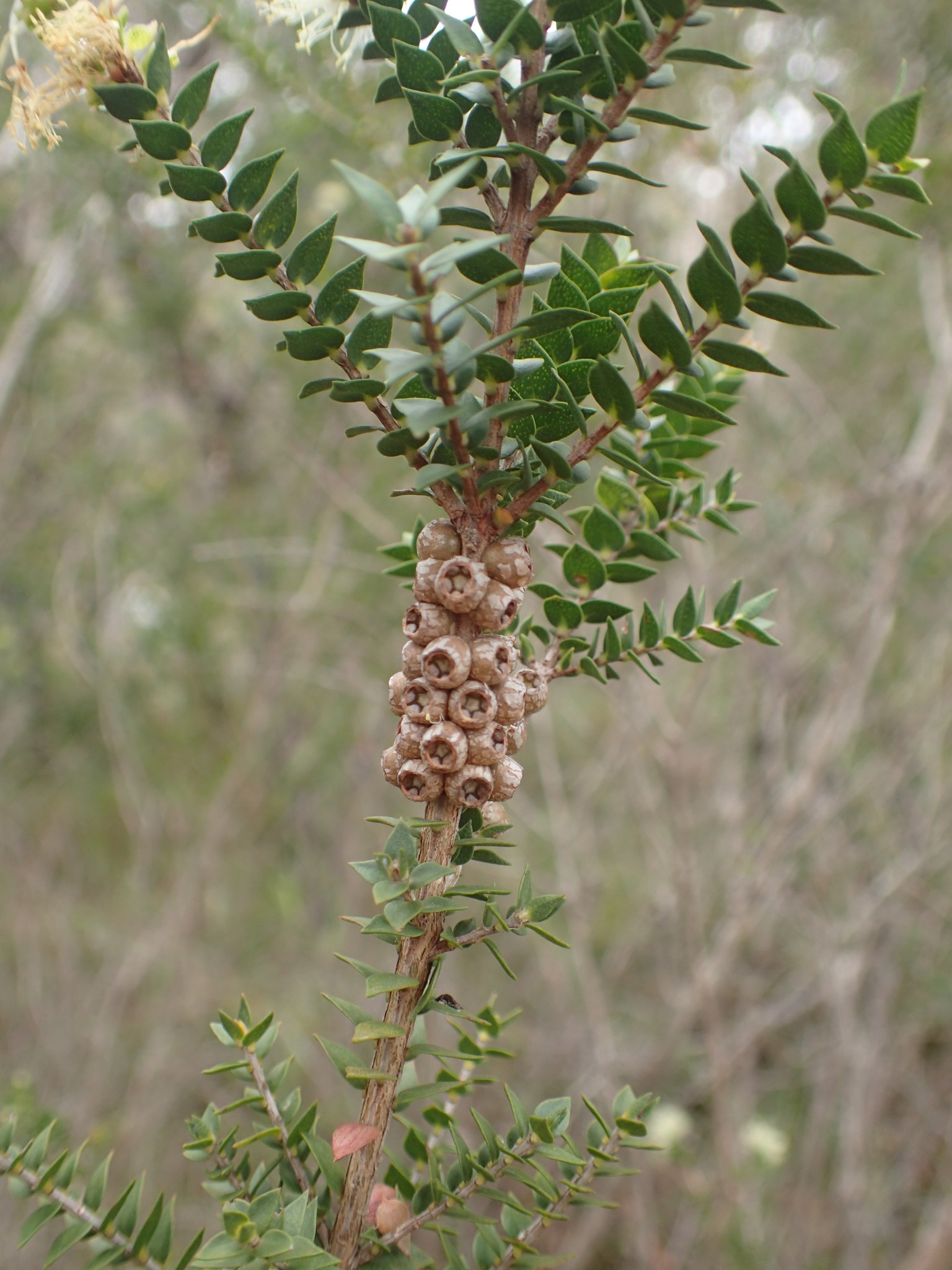
Greek melas — black, leucon — white, referring to the contrasting colours of the bark.
Shrubs or trees, larger plants often with papery bark. Leaves opposite, alternate, or irregularly arranged, cylindrical to lanceolate or oblanceolate, sometimes with several longitudinal veins, entire, more or less stalkless, the tip sometimes sharply pointed. Flower clusters spike-like, oblong to cylindrical or in heads, sometimes from the old wood. Flowers 5-parted. Sepals and petals roundish. Stamens numerous, longer than the petals, united at the base into 5 bundles; anthers versatile. Ovary half-inferior, 3- or 4- chambered. Fruit a woody, mostly 3-valved loculicidal capsule often persistent on the stem, containing many seeds.
Grown in a wide range of habits from spreading shrubs to large trees, the foliage varying from minute scale leaves to large flat leaves and the bark sometimes thick and papery white (especially M. leucadendra, M. linariifolia and M. styphelioides). The ornamental flower heads range from bottlebrush-like spikes to globular heads varying from white, yellow and green to pink, lilac, red or orange.
About 240 species, from widely different climatic areas, mostly Australian but extending into New Guinea and Malesia.
The Waite Institute, Glen Osmond, SA, had about 30 species in 1989.
Most trees by seed, shrubs by cuttings.
Some species are the source of commercial oils, especially M. alternifolia (Tea Tree Oil), M. cajuputi (Cajuput Oil - the name variously spelled Cajeput, Cajuput or Caju Puti) and M. quinquenervia (Niauoli Oil in New Caledonia). Some oils also have medicinal applications. A few species are used for timber, floriculture, erosion control, flavouring food and drinks, and as a source of paperbark for bark paintings. M. uncinata, Broombush, is used for brush fencing.
Stamens numerous, united into 5 bundles, longer than the petals; fruit a woody capsule of 3-4 chambers, cf. Callistemon which has stamens free. M. micromera Schauer, Wattle Honey-myrtle, from WA has tiny scale-like leaves in whorls of 3; M. filifolia F. Muell.,Wiry Honey-myrtle, has distinctive alternate long, linear cylindrical leaves 5-10 cm long and pink to magenta terminal roundish flower heads.
Barlow (1987), Craven &Lepschi (1999). Popular: Holliday (1989), Wrigley & Fagg (1993).
Source: (2002). Myrtaceae. In: . Horticultural Flora of South-eastern Australia. Volume 3. Flowering plants. Dicotyledons. Part 2. The identification of garden and cultivated plants. University of New South Wales Press.
